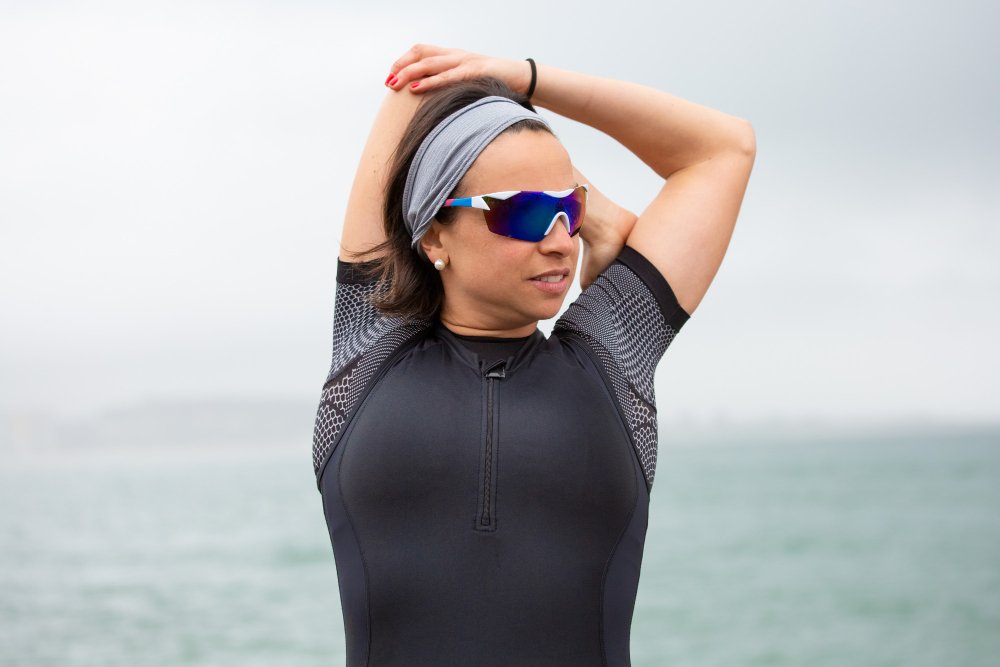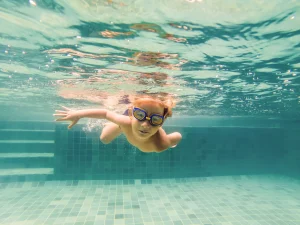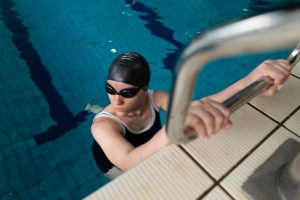Swimming lessons for triathletes are not just a preparatory stage, but the very foundation that transforms the journey of anyone wishing to venture into triathlon or other endurance competitions.
While running and cycling often feel natural to most people, swimming is usually where the greatest challenge lies.
However, when properly developed, swimming becomes a competitive advantage and an essential pillar for any multi-sport athlete.
Learn how to progress from beginner to triathlete, and how swimming lessons can power your multi-sport journey.
Swimming lessons for triathletes: the foundation of endurance sports
In triathlon, the race begins in the water. This is often the moment when many competitors face their biggest hurdles: anxiety, excessive energy expenditure, or even insecurity in open water.
Unlike running and cycling, swimming demands specific movement coordination, breath control, and mental adaptation.
In other words, practice not only strengthens muscles and lungs but also builds discipline, resilience, and self-confidence. Students learn to face discomfort and push through limits—skills that are highly valuable on race day.
Moreover, as a low-impact discipline, swimming helps balance training load, preventing common injuries in runners and cyclists.
Put simply, it strengthens both body and mind, preparing the athlete for the entire journey.
Swimming lessons for triathlon
When it comes to this sport, swimming lessons for triathletes take on a strategic role, different from conventional training. Specialised training ensures that effort in the water becomes a competitive edge. A tailored programme for triathletes addresses:
- Energy efficiency;
- Breathing under pressure;
- Realistic simulations;
- Emotional control.
How to progress from beginner to triathlete
The journey from beginner to triathlete is made up of well-defined stages. Each phase has clear objectives, creating steady progress for the swimmer:
1. First contact with the water
The first step is feeling comfortable in the aquatic environment. This stage is crucial for people with no swimming background or those who experience fear and discomfort. The goal is to create safety and enjoyment in the learning process.
Lessons at this stage focus on:
- Reducing fear of water and building trust;
- Learning to float in different positions;
- Practising controlled breathing, with immersion and exhalation;
- Executing basic leg kicks, essential for propulsion.
2. Technical foundations
Once adaptation is achieved, the next step is to learn correct movement. Front crawl is the most efficient stroke for triathlons, allowing long distances to be covered quickly with reduced effort.
At this stage, swimming lessons for triathletes develop:
- Coordination of strokes, kicks, and breathing;
- Hydrodynamic posture and reduced water resistance;
- Techniques of glide and turns to improve efficiency.
3. Improvement and conditioning
After consolidating technique, training shifts to building endurance. The focus here is on lung capacity and strength, using methods such as:
- Bilateral breathing, crucial in open water;
- Stroke refinement, eliminating unnecessary movements;
- Interval training to boost cardiovascular conditioning;
- Use of equipment such as paddles, fins, and pull buoys to strengthen specific muscles.
4. Transition to sports performance

At this stage, the swimmer can already cover longer distances consistently and begins specific race training, including:
- Group start simulations to practise physical contact;
- Navigation drills to maintain direction without lane markers;
- Pacing strategies to conserve energy;
- Strength and speed training in both short and long sets.
The highlight of this stage is transitioning to natural environments—sea, lake, or river. Swimming lessons provide the tools for a gradual adjustment.
Guided training, race simulations, and close monitoring build confidence. Over time, the swimmer realises that pool techniques are entirely transferable to open water.
5. Final preparation for triathletes
At advanced level, the swimmer is treated as a competitor, able to integrate swimming with the other two triathlon disciplines. Training now focuses on fine details that make the difference, such as:
- Stroke refinement aimed at conserving energy;
- Combined swim-and-cycle training to simulate real transitions;
- Individualised training loads according to race calendar;
- Mental preparation to manage anxiety and pressure on decisive days.
The importance of having a specialised coach
Progressing from your first stroke to becoming a triathlete requires more than dedication. It demands technique, strategy, and the right guidance.
At Easy2Swim, our instructors know how to identify mistakes, propose corrections, and adapt training to each triathlete’s individual needs.
With swimming lessons designed specifically for triathletes, the process becomes more efficient, accelerating learning and building confidence both in the pool and in open water.
In addition, our instructors can organise specific training sessions in London lakes such as Hyde Park’s Serpentine Lido, Hampstead Heath Ponds, or West Reservoir.
If you want to begin your triathlon journey or take your performance to the next level, Easy2Swim is ready to support your evolution. With private swimming lessons, we turn the challenge of water into your greatest competitive advantage. Book a session and see for yourself.






